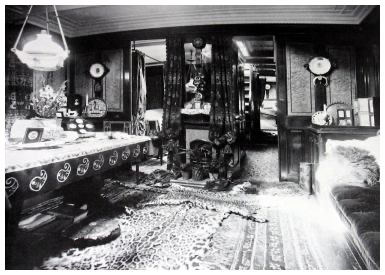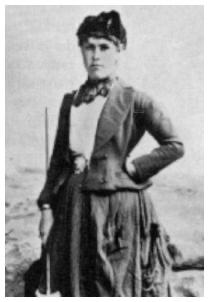Puffin10032
Well-Known Member
My little fantasy would be we win and go back to the original rules and course. Now that would be a laugh!
And mandate that it's sailed in dinghies
My little fantasy would be we win and go back to the original rules and course. Now that would be a laugh!
You’re missing a trick. Reverting to previous rules, insist that boats are sailed to the event from their club.And mandate that it's sailed in dinghies
You’re missing a trick. Reverting to previous rules, insist that boats are sailed to the event from their club.
It would be a great problem to have, and a huge leap to even think about a potential venue.….. Portland or Portsmouth might be contender locations, I can’t see Cowes making the grade sadly
but maybe we could at least avoid the Barry Humphries commentaryI doubt if the Squadron would hold it anywhere but GB. And no need to really. The only issue might be wind, we tend to have a lot of it or hardly anything.
A pedant writes...Yes - Oracle were losing 8-1 in a first to nine series so they brought Ben in as tactician. Ended up winning 9-8. While not the only factor, Ben's tactical skills were a key part of that.
I think that's a given to be honest.And we are now back to building boats purely to contest the America's Cup - I see no chance of these AC75s having any life at all outside the LV / AC - which is a shame.
I will just add that, from 1887 down to the 1930 series which was the first in the J class, the American defenders were completely uninhabitable and fit for nothing except racing for the America’s Cup and the British challengers crossed the Atlantic under a cut down yawl rig and had their internal accommodation removed before the races started.I think that's a given to be honest.
Where the Js, and even the 12s, have enjoyed a long retirement as (very) rich persons plaything, the same is almost impossible to imagine for the AC75s. For a start the J's and 12s have been fitted with things like engines, and even interiors, so that the other part of rich person yachting - the entertaining - can be done on board. And of course in nice places that rich people like to go yachting, like the Med and the Carribean, sailing in chino shorts and shirts is very pleasant.
In contrast the AC75s would require large shore crews, escape training, spare air bottles in every seat, and helmets etc. Not saying that there aren't people who would be thrilled to go sailing like that, but that the Venn diagram of "people who could afford to run a boat like that" and "people with the talent to actually sail it" has a vanishingly small intersection. Plus of course you spend all that money and only get to helm on one tack!
You can actually now go out and place an order for an AC40, the boats that were used for the preliminary regattas earlier this year and now the youth and women's. They're advertised at £3million. What you'd do with one once you had it, I don't know...


Did they have a billiard table on board?The Henns were in some respects a very modern couple. They met whilst sailing in the Mediterranean - Lt William “Paddy” Henn aboard his 80 ton yawl “Gertrude” and Susan Cunningham-Grahame was sailing with her brother aboard a “small yacht”.
They married, in 1877, and Susan moved aboard the “Gertrude” and they carried on living aboard and cruising in Europe and the Med until in 1885 they had the cutter Galatea built in steel on the Clyde, to a design by Beavor-Webb.
They sailed her across the Atlantic, Susan Henn becoming the first woman to cross the Atlantic aboard a racing yacht and in due course the first woman to take part in an America’s Cup race, in 1886.
And here’s the saloon:
View attachment 183925
I wonder if the leopard skin had been shot by Lieutenant Henn on his successful expedition to find Henry Morton Stanley, who had just found Livingstone?
Anyway unlike certain other Cup challengers the Henns were very popular in the States and carried on living aboard and cruising there after the usual thrashing (it was best of three in those days and they lost the first two).
Here’s Susan Henn:
View attachment 183926
Not to my knowledge, but I remember looking at the HongKong Bank launch “Wayfoong” in HK. She was built as a steamer so she is quite similar in shape and she very definitely scends rather than rolls in a swell.Did they have a billiard table on board?
I wonder how it would rate on IRCI think that's a given to be honest.
Where the Js, and even the 12s, have enjoyed a long retirement as (very) rich persons plaything, the same is almost impossible to imagine for the AC75s. For a start the J's and 12s have been fitted with things like engines, and even interiors, so that the other part of rich person yachting - the entertaining - can be done on board. And of course in nice places that rich people like to go yachting, like the Med and the Carribean, sailing in chino shorts and shirts is very pleasant.
In contrast the AC75s would require large shore crews, escape training, spare air bottles in every seat, and helmets etc. Not saying that there aren't people who would be thrilled to go sailing like that, but that the Venn diagram of "people who could afford to run a boat like that" and "people with the talent to actually sail it" has a vanishingly small intersection. Plus of course you spend all that money and only get to helm on one tack!
You can actually now go out and place an order for an AC40, the boats that were used for the preliminary regattas earlier this year and now the youth and women's. They're advertised at £3million. What you'd do with one once you had it, I don't know...
mini 650s have been foiling for a while.I wonder how it would rate on IRC
With their electric power the AC40s are clearly a more practical proposition than the AC75s and with some intelligent control software they might almost be within the handling capability of reasonably experienced sailors.
Having seen some of the new small foiling boats (wind surfers etc) I can't help thinking we are getting to the stage where a small foiling sailing boat is feasible
The Americas Cup boats have never been anything that the average boater would sail - the J Class was a dedicated race boat for the super wealthy, so nothing new.
But just like none of us would want a second hand Formula 1 car to drive to the shops, there is a lot of technology trickle down from these racing machines - both cars and boats.
But it does depend a bit on your definition of “most of us”. Clearly little in common with, and little technology trickle down, to somebody sailing a 40 year old cruiser. But the previous generation of foiling catamarans had lot of influence in some quarters. And foils are increasingly relevant in the racing classes - in 3 of the Olympic sailing events, and increasing number of dinghy classes plus offshore racers.
Not new of course. Currently reading a book about the Cheers project for the 1968 OSTAR - and noticed that Dick Newick mentioned that he had briefly considered a foiling multihull back in 1967, but the technology of the day wouldn’t have made it able to be used safely long distance single handed (with no electronics etc).
I wonder how it would rate on IRC
With their electric power the AC40s are clearly a more practical proposition than the AC75s and with some intelligent control software they might almost be within the handling capability of reasonably experienced sailors.
Having seen some of the new small foiling boats (wind surfers etc) I can't help thinking we are getting to the stage where a small foiling sailing boat is feasible
I don't think it's possible to put the foiling genie back in the bottle now. Nor is it especially desirable that we do.There's lots of feasible small foiling sailing boats already - do you mean small foiling yachts?
The Quant 23s in Europe are similar and they seem to be fairly feasible, but production ceased at around 11 boats. Foiling brings with it some interesting issues that seem to be often overlooked. Unless you just want to reach or run in a breeze, you've got to have massive amounts of righting moment to handle the apparent wind, which isn't easy. You also need to have a low-windage hull and, even more critically, a low-drag rig that is nevertheless powerful enough to overcome the considerable low-speed drag of the foils and push them quickly enough to get lift. And then of course you need a foil control system that can handle real life.
The current little foilers show the issues. The foiling Laser popped up OK and felt surprisingly small when it was on foils, but the high aero drag of the rig and the low righting moment of the hull limited its performance dramatically. The small foiling cats are only about 2-3% than their non-foiling counterparts most of the time in the hands of most people, even very good people. The righting moment issue can also be seen in the way the Olympic windsurfer and kite foilers had to fatten up from sometimes about 70kg to over 100kg (and much of it is literally fat since they couldn't put on the required 25 or so kg without almost force-feeding, the guys on the podium are almost unrecognisable now) to create the required righting moment. And foils themselves are finicky - some serious guys don't even allow clean fingers to touch the foils because it creates ventilation, and crashing from foils is way nastier than crashing at similar speeds and heights in non-foilers because foils dig in and stop you dead. So any feasible foiler is going to have to be dry-sailed, and quite carefully treated.
The only foiling America's Cup coach I know says that he has dropped out since the AC75s arrived because they are so dependent on computer controls that it's not "real sailing" like it was with the AC72 cats or the Sail GP boats he's sailed and driven. That level of control is unlikely to be feasible at the level of mortals.
One of the interesting things about foilers is that many people in the sailing press who saw it as the future of the sport 15 years ago still haven't bought their own foiler or sailed them much. It says a lot about how out of touch they are, and also indicates that they lack personal experience of the downsides.